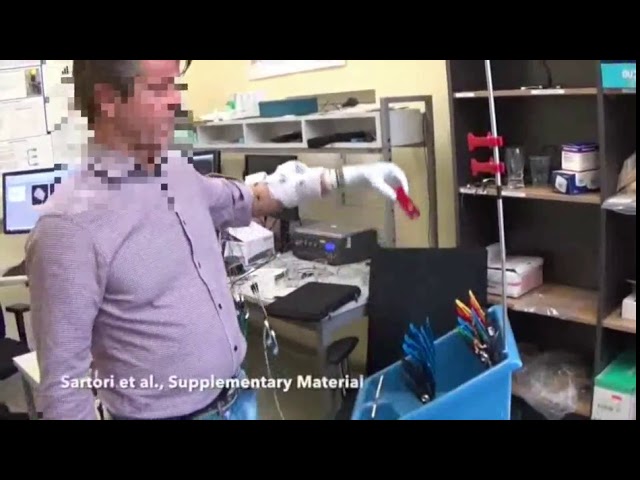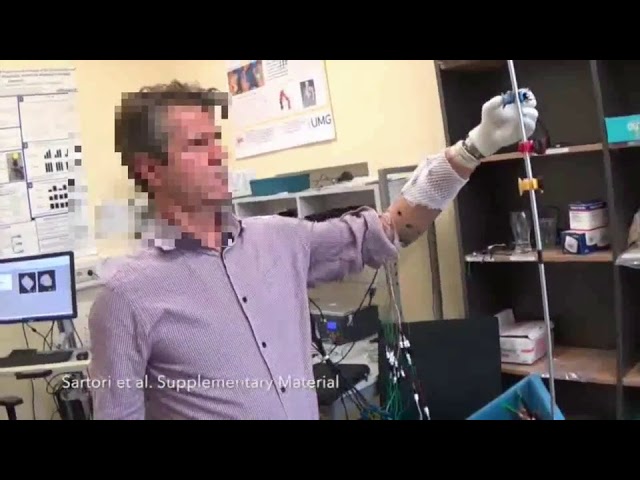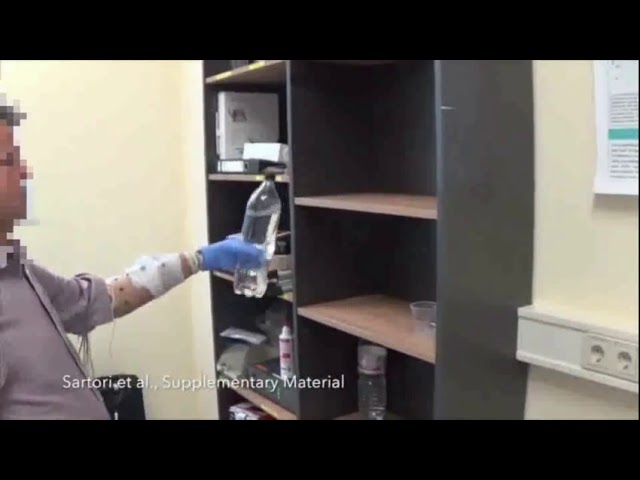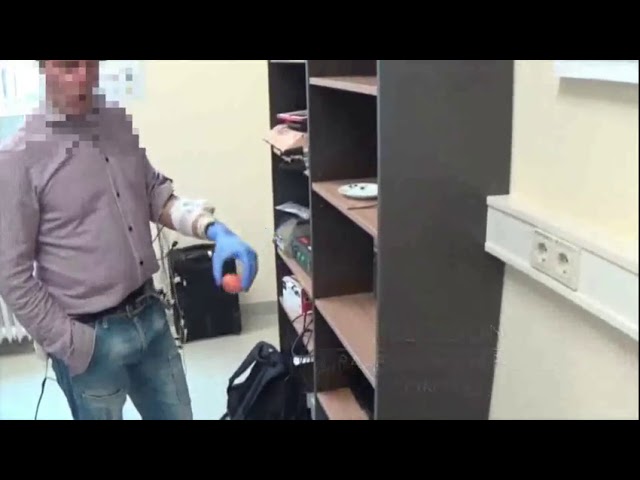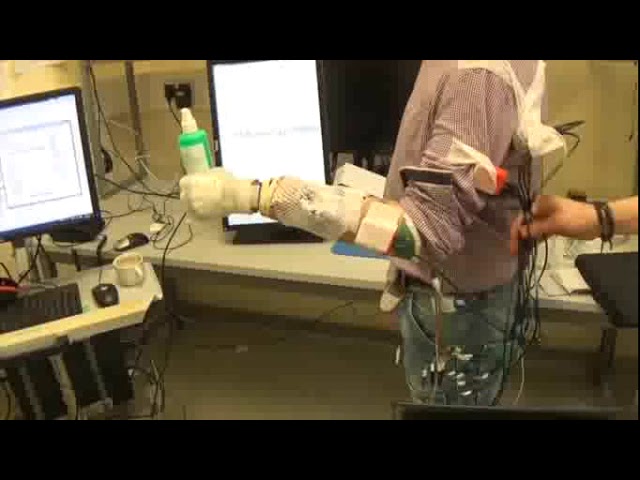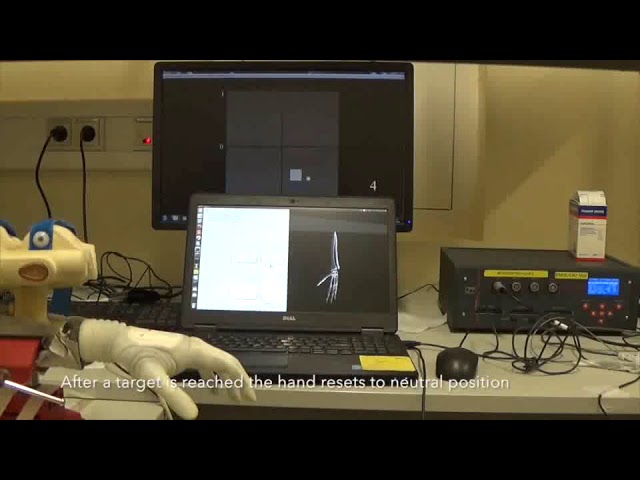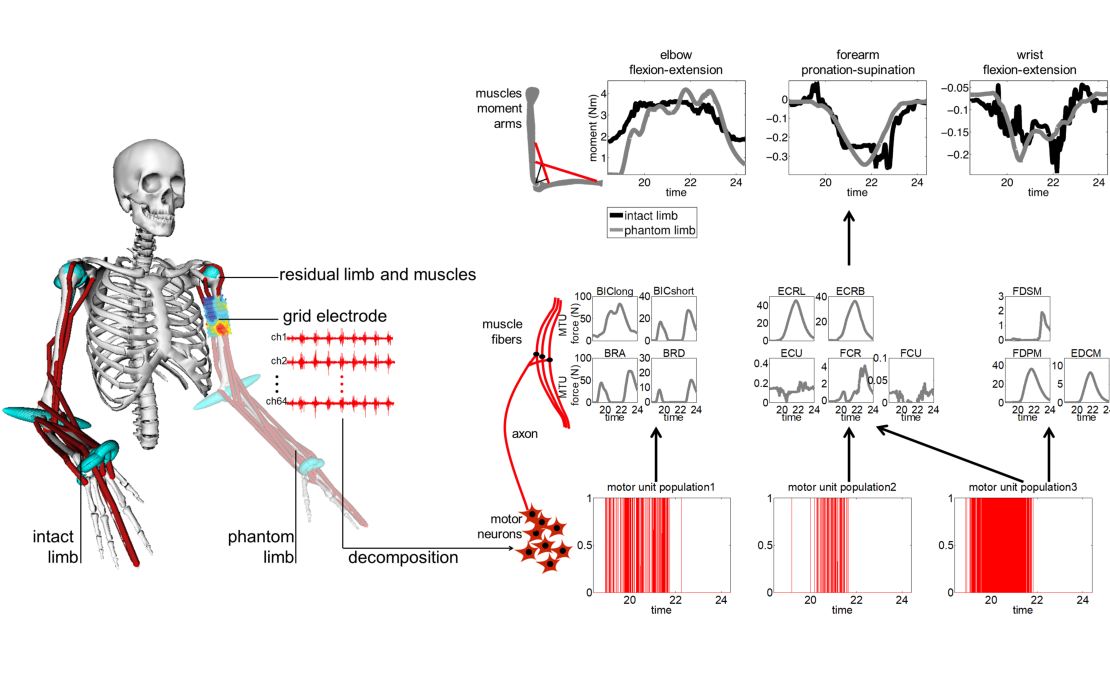
We define and experimentally test novel man-machine interfaces based on the discharge timings of spinal motor neurons. The motor neuron behavior is identified by deconvolution of the electrical activity of muscles reinnervated by nerves of the missing limb in patients with amputations at the shoulder or humeral level (targeted muscle reinnervation, TMR). The series of motor neuron discharges is mapped into control commands for computational models that explicitly synthesizes the dynamics of the musculoskeletal system. The development of man-machine interfaces that account for an individual’s neuromusculoskeletal system will open unprecedented opportunities to address clinically relevant rehabilitation challenges via biomimetic wearable assistive technologies.
Selected Publications
M. Sartori, G. Durandau, S. Dosen, D. Farina. ‘Robust Simultaneous Myoelectric Control of Multiple Degrees of Freedom in Wrist-Hand Prostheses by Real-Time Neuromusculoskeletal Modeling’. Journal of Neural Engineering. DOI: 10.1088/1741-2552/aae26b (2018).
M. Sartori, U. S. Yavuz, D. Farina, In Vivo Neuromechanics: Decoding Causal Motor Neuron Behavior with Resulting Musculoskeletal Function. Scientific Reports 7, 13465 (2017).
D. Farina, I. Vujaklija, M. Sartori, et al., Man/machine interface based on the discharge timings of spinal motor neurons after targeted muscle reinnervation. Nature Biomededical Engineering 1, 25 (2017).
*S. Schaffelhofer, *M. Sartori, H. Scherberger, D. Farina, “Musculoskeletal representation of a large repertoire of hand grasping actions in primates”. IEEE Transactions on Neural Systems and Rehabilitation Engineering, 23:2, 210-220 (2015). *Equal first author.

